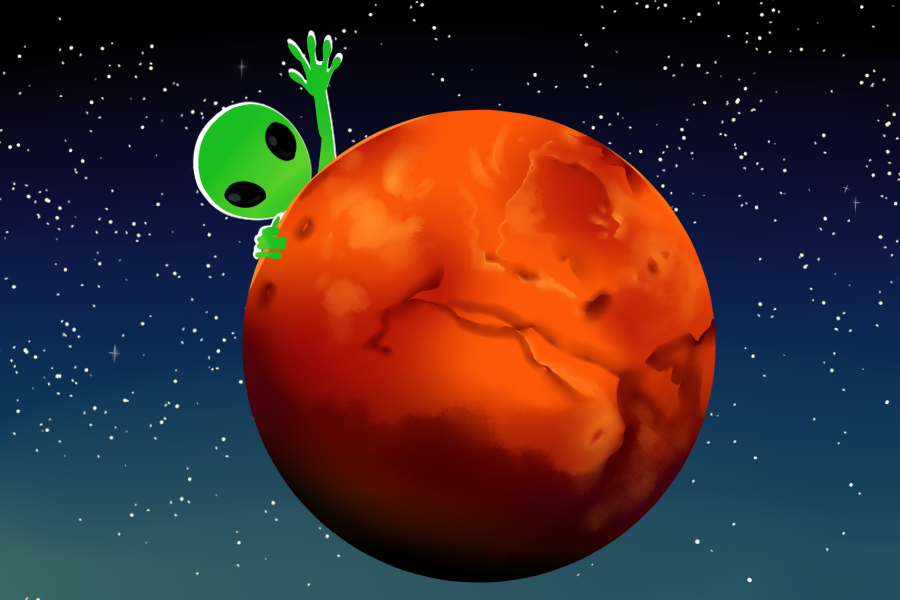
NASA scientists conduct research at McLaughlin Natural Reserve
Since the beginning of modern astronomical research, the possibility of life on other planets has been a topic of peak interest. With the goal of looking into the processes that make life possible on our planet, a group of NASA scientists have been working on a research project at the McLaughlin Natural Reserve.
The McLaughlin Natural Reserve, operated under UC Davis, is one of the 39 reserves that exist under the UC Natural Reserve System.
“The UC Natural Reserve System is a network of natural areas around California that have been set aside and protected so that people can do research, learn about natural systems and help address environmental issues,” said Kathleen Wong, principal publications coordinator at the UC Natural Reserve System.
The UC Natural Reserve system consists of a wide range of natural areas including the Bodega Marine Reserve, the Jepson Prairie Reserve, McLaughlin Natural Reserve and many more. Within these reserves, a variety of people from different institutions and universities come together to participate in various research projects.
“[The reserves] are a library of ecosystems that the University of California makes available to both students and faculty, but also the general public,” Wong said.
While McLaughlin Natural Reserve and other reserves in California are primarily utilized for research projects, one of the UC Natural Reserve System’s goals is to educate the public about nature and the world around them.
At McLaughlin Natural Reserve specifically, there are around 50 ongoing research projects. One of the most notable projects is the hunt for conditions on Earth that can be comparable to those on other planets in our solar system.
A group of NASA scientists, including Tori Hoehler, a research scientist at NASA Ames Research Center, have taken advantage of the rich serpentine soils in McLaughlin to study the types of organisms that grow there.
“The rocks [at McLaughlin Natural Reserve] undergo a process called serpentinization: a reaction between the rocks and water. This same process of serpentinization yields fluids that are rich in things like hydrogen that represent the potential for microorganisms,” Hoehler said.
Through the process of serpentinization, organisms have access to hydrogen, a compound that many microorganisms need to survive. Serpentinization also creates a highly alkaline environment that allows specific microorganisms, such as the ones living in McLaughlin, to thrive.
The amount of hydrogen and the specific environment that is formed depends on a multitude of factors, including the composition and temperature of soils.
“The specific reason why NASA is interested in this, is that this process that rocks like our mantle rocks give rise to is widespread throughout our solar system,” Hoehler said. “So this process has the potential of occurring all over the place.”
By looking at the process of serpentinization that occurs within McLaughlin Natural Reserve, scientists are able to see what conditions make life possible on Earth and apply that knowledge to other planets in the solar system.
Knowing that serpentine-like minerals do exist on planets like Mars, NASA scientists are interested in the possibility of this process occurring on other planets. This curiosity is especially sparked by the fact that many other planets in our solar system do not have easy access to sunlight. Because of this, there is a higher chance of serpentinization being a major energy source on these planets, compared to sunlight being the major energy source on Earth.
By analyzing the processes that microorganisms undergo and their interactions among each other in McLaughlin, scientists will be able to apply their gained knowledge from Earth to other planets.
Currently, research is still honing in on the microbiological aspects of McLaughlin Natural Reserve. With this research, McLaughlin now serves as a model for microbial communities that live in alkaline and serpentine-rich conditions.
There are also many other research projects that are currently ongoing within the natural reserve system. Students and non-students have the opportunity to pose questions and conduct research within these natural reserves. The UC Natural Reserve System gives the public the opportunity to ask questions and get involved.
“All of the reserves would welcome talking to undergrads who are thinking of doing independent studies and help them figure out if doing their research in a natural landscape, such as a reserve would be something that would be rewarding to them,” said Catherine Koehler, resident director at McLaughlin Natural Reserve.
As research continues at this reserve, scientists will continue to get one step closer to figuring out the probability of life on other planets.
Written by: Molina Hauv — science@theaggie.org



